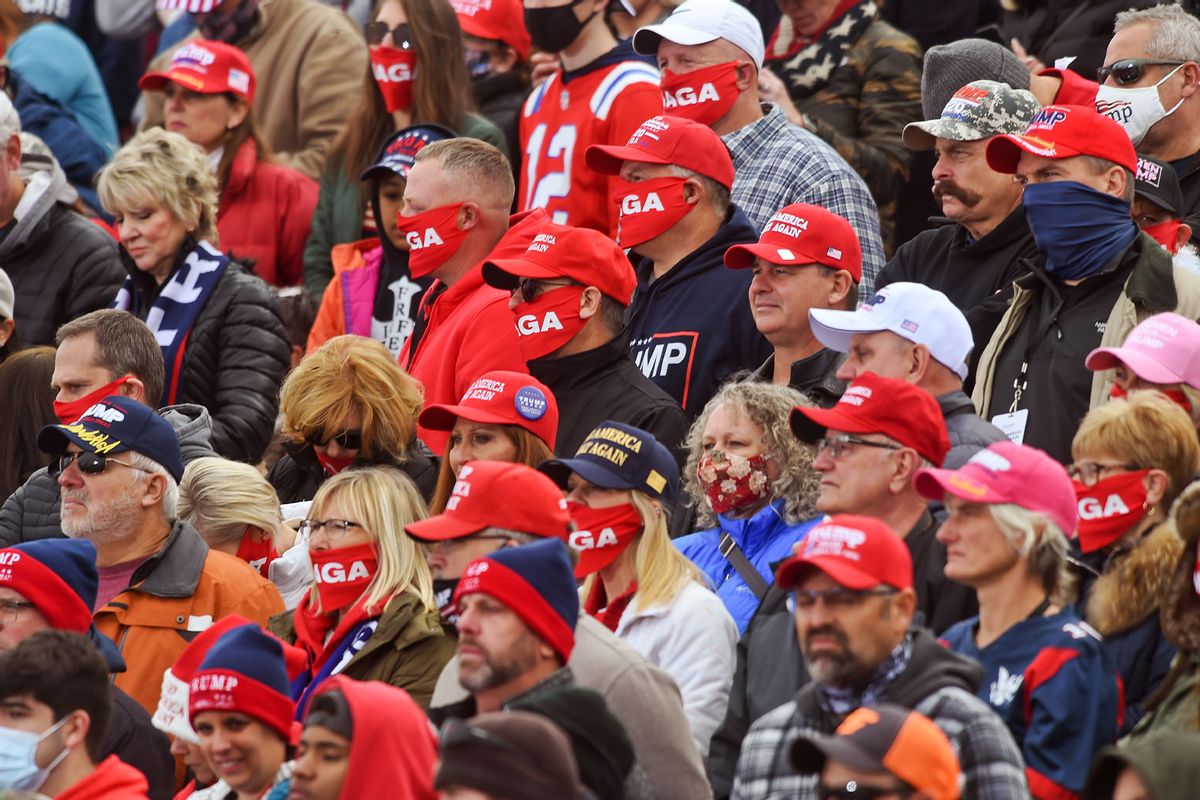Trump allowed all antisemites to come out of their caves and antisemitism cases grew by the hundreds and are still high since he before he became President.
------------
During the past decade, social media has amplified the voices of white supremacists and anti-Semites, but it is Trump who has lent them legitimacy and emboldened them to come out of the shadows.
The biggest threat to Jews today are not wealthy WASPs, working-class Catholics, or low-income African Americans, but white supremacist groups—whose members are distinct from but sometimes overlap with white evangelical Christians—that have grown in number and audacity in the last few years.
It is no accident that anti-Semitic incidents have spiked since Donald Trump began campaigning for president in 2015. While Trump takes umbrage at being called an anti-Semite—“I’m the least anti-Semitic person you’ve ever seen,” he’s said on several occasions—his use of anti-Semitic stereotypes has emboldened Jew-haters. He verbalizes, encourages, enables, tolerates, winks at, and makes excuses for anti-Semitism, most notably when he said that some of the Nazis marching in Charlottesville in 2017 were “good people.”
Anti-Semitic comments on social media skyrocketed after Trump announced his campaign. An ADL
report uncovered more than 2.6 million tweets with anti-Semitic comments and images from August 2015 to July 2016—a huge upsurge from the previous year. Many of the commenters identified themselves as Trump supporters or Clinton haters, and many of the tweets (including death threats) were directed at Jewish journalists who had been critical of Trump.
Trump has consistently used anti-Semitic stereotypes in his business and political careers. In July 2016, during his campaign, Trump tweeted a graphic borrowed from 8chan, a website frequented by white supremacists, showing Hillary Clinton against a backdrop of $100 bills. Inside a six-pointed red star (clearly the Star of David) were the words, “Most Corrupt Candidate Ever!”
In a
speech in October 2016, Trump claimed that “Hillary Clinton meets in secret with international banks to plot the destruction of U.S. sovereignty in order to enrich these global financial powers, her special interest friends and her donors.” He didn’t need to use the word “Jew” in order to evoke the sort of global banking cabal familiar to anyone who has read
The Protocols of the Elders of Zion, the anti-Semitic forgery that has fueled anti-Jewish violence for over a century. Trump’s comments were not an off-hand remark. The speech was designed to fire up Trump’s white nationalist supporters. Trump’s frequent references at campaign rallies and during the debates to Sidney Blumenthal, George Soros, and Debbie Wasserman Schultz—Jewish supporters of Hillary Clinton—were also no accident.
In
December 2015, in a speech to the Republican Jewish Coalition, Trump said, “I’m a negotiator like you folks, we are negotiators. . . . Is there anybody that doesn’t renegotiate deals in this room? This room negotiates them—perhaps more than any other room I’ve ever spoken in.” Digging himself deeper, Trump added: “And I know why you’re not going to support me. You’re not going to support me because I don’t want your money. Isn’t it crazy? You want to control your own politician.”
In Trump’s final
campaign video, a clear appeal to anti-Semitism, he warned of “those who control the levers of power in Washington” and of “global special interests” who “partner with these people who don’t have your good in mind,” while pictures flashed of Hillary Clinton and three Jews: Soros, Federal Reserve Chair Janet Yellen, and Goldman Sachs CEO Lloyd Blankfein.
Trump’s rants about immigrants “invading” the United States are also tied to the long-standing anti-Semitic slur that Jews have conspired to destroy America by encouraging mass immigration by non-white people. These racist fears are the origin of the slogan “Jews will not replace us,” chanted by the white supremacists who marched with Nazi flags and torches in Charlottesville. In 2018, Trump baselessly accused Democrats of encouraging a
caravan of refugees to seek entry into the United States, while his close ally Matt Gaetz, a Florida congressman, accused philanthropist George Soros, who is a Jew and a Democrat, of funding the caravan.
The killers who went on rampages at two different synagogues in the past year and a half echoed this canard about Jews plotting to promote non-white immigration. Before he entered the Pittsburgh synagogue, Robert Gregory Bowers posted a message online attacking HIAS (originally called the Hebrew Immigrant Aid Society), a Jewish nonprofit group that was helping bring refugees from Syria and Afghanistan to the United States. “HIAS likes to bring invaders in that kill our people,” he wrote. “I can’t sit by and watch my people get slaughtered.” John T. Earnest, the attacker at the Poway synagogue, wrote “I would die a thousand times over to prevent the doomed fate that the Jews have planned for my race” on an anti-Semitic message board. “Every Jew is responsible for the meticulously planned genocide of the European race. They act as a unit, and every Jew plays his part to enslave the other races around him—whether consciously or subconsciously. Their crimes are endless.”
“We have a president who talks about ‘hordes’ and ‘swarms’ and all sorts of other things about immigrants,” explained Deborah Lipstadt, an Emory University historian, to a reporter for
Vox. “This stuff has been around for a long time . . . but now lots of the barriers are down, and now people feel like they can say it and they can do things.”
(full article online)
During the past decade, social media has amplified the voices of white supremacists and anti-Semites, but it is Trump who has lent them legitimacy and emboldened them to come out of the shadows.

www.dissentmagazine.org




